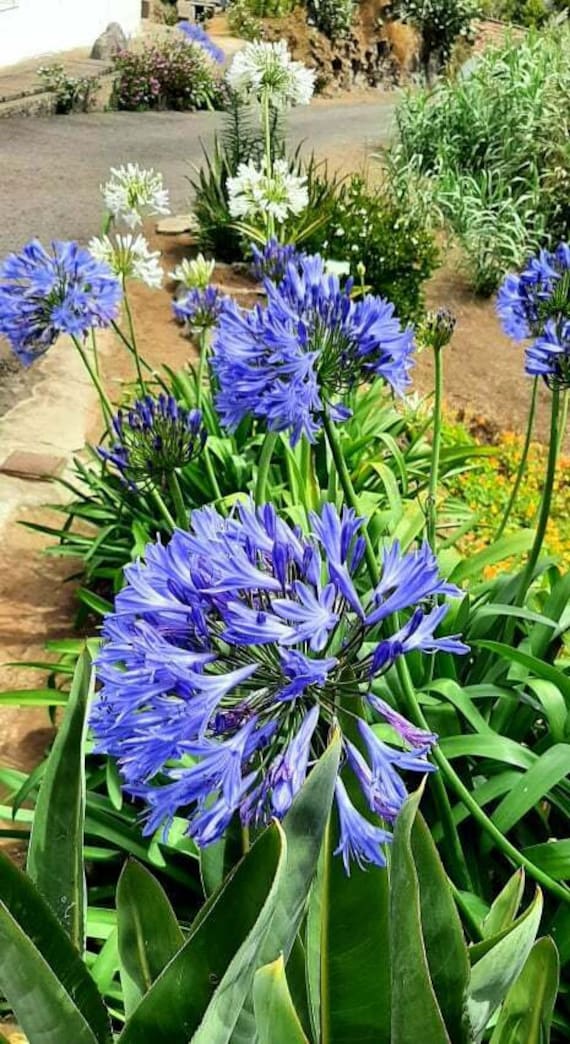Mastering the Art of Agapanthus Treatment: Crucial Steps for Healthy Growth and Vivid Blossoms
In the realm of cultivation, the farming of agapanthus stands as a satisfying undertaking for those who look for to support these elegant flowering plants. From picking the appropriate selection to mastering trimming methods, the journey towards cultivating thriving agapanthus plants is diverse and holds the key to unlocking the complete possibility of these agricultural gems.

Picking the Right Agapanthus Selection

When picking the appropriate Agapanthus variety for your garden, consider elements such as environment viability, flower color, and growth routine. In addition, take into consideration the environment in your region to make sure the Agapanthus selection you choose can flourish in your particular conditions. Understanding the development routine of different Agapanthus ranges is vital for proper placement within your yard.
Perfect Planting Problems
Thinking about the optimal ecological requirements is essential for successful Agapanthus farming. Agapanthus grows in well-draining soil with a somewhat acidic to neutral pH level. When planting, pick a location that receives complete sunshine to partial shade. In hotter environments, supplying some mid-day shade can prevent scorching of the fallen leaves. Agapanthus plants are delicate to cold temperatures and must be safeguarded from frost during cold weather.
To ensure healthy and balanced growth and lively flowers, plant Agapanthus light bulbs at a depth of about 2-4 inches and room them 8-12 inches apart. Mulching around the base of the plants aids preserve dampness and suppresses weed development.
Watering and Feeding Tips
Preserving proper moisture degrees and giving vital nutrients are vital components in the care program for Agapanthus plants. When it comes to watering Agapanthus, it is essential to strike a balance. These plants choose constantly wet dirt but are prone to root rot if overwatered.
Fertilizing Agapanthus is essential for advertising healthy and balanced development and prolific flowers. Use a well balanced plant food, such as a 10-10-10 formula, in the early spring as new development emerges. By adhering to these watering and fertilizing tips, you can ensure your Agapanthus plants grow and produce vibrant, long-lasting blooms.
Pruning Methods for Agapanthus
Pruning Agapanthus plants at the proper times and with proper strategies is vital for preserving their wellness and advertising optimal growth and blooming. The perfect time to trim Agapanthus is in late winter or early spring prior to new development emerges.
Deadheading spent blossoms can additionally reroute the plant's energy into producing even more blossoms rather than setting seeds. If you want to accumulate seeds for breeding, leave some flowers to completely dry and fully grown on the plant.
Bear in mind to make use of clean, sharp devices to make accurate cuts and decrease the threat of presenting illness. Agapanthus. Routine pruning will certainly help keep your Agapanthus looking neat and healthy while making certain a bountiful display screen of beautiful blossoms
Handling Usual Insects and Illness
After making certain correct trimming strategies for Agapanthus, it is important to deal with common pests and try this website illness that can influence the wellness and vitality of these plants. Agapanthus plants are normally sturdy yet can still succumb to particular issues. One usual insect that influences Agapanthus is the Agapanthus gall midget. This tiny, orange fly lays its eggs in the vegetation, bring about distorted growth and blossom buds that fail to open. To combat this parasite, trim and destroy any affected plant parts and take into consideration making use of insecticidal soap.
Another typical issue is fungal fallen leave place, which offers as dark sores on the fallen leaves. To avoid fungal diseases, guarantee good air circulation around the plants, prevent overhanging watering, and remove any kind of infected leaves immediately. Furthermore, Agapanthus plants can deal with root rot if they are grown in inadequately draining soil. To stop this, plant Agapanthus in well-draining soil and prevent overwatering. By being alert and taking prompt action against diseases and bugs, you can assist your Agapanthus plants flourish and generate lively blossoms.

Conclusion
To conclude, grasping the art of agapanthus treatment involves selecting the ideal variety, supplying optimal growing conditions, appropriate watering and feeding, appropriate pruning methods, and dealing with Web Site typical parasites and diseases. By complying with these necessary actions, you can guarantee healthy growth and vibrant flowers for your agapanthus plants. Remember to regularly keep track of and keep your plants to promote their total wellness and longevity.
To make sure healthy and balanced growth and lively blossoms, plant Agapanthus light bulbs at a deepness of concerning 2-4 inches and room them 8-12 inches apart. By complying with these watering and feeding a knockout post pointers, you can guarantee your Agapanthus plants flourish and create vivid, resilient flowers.
One usual pest that influences Agapanthus is the Agapanthus gall midget. Furthermore, Agapanthus plants can suffer from root rot if they are grown in improperly draining dirt. By following these necessary steps, you can guarantee healthy and balanced development and vivid blooms for your agapanthus plants.